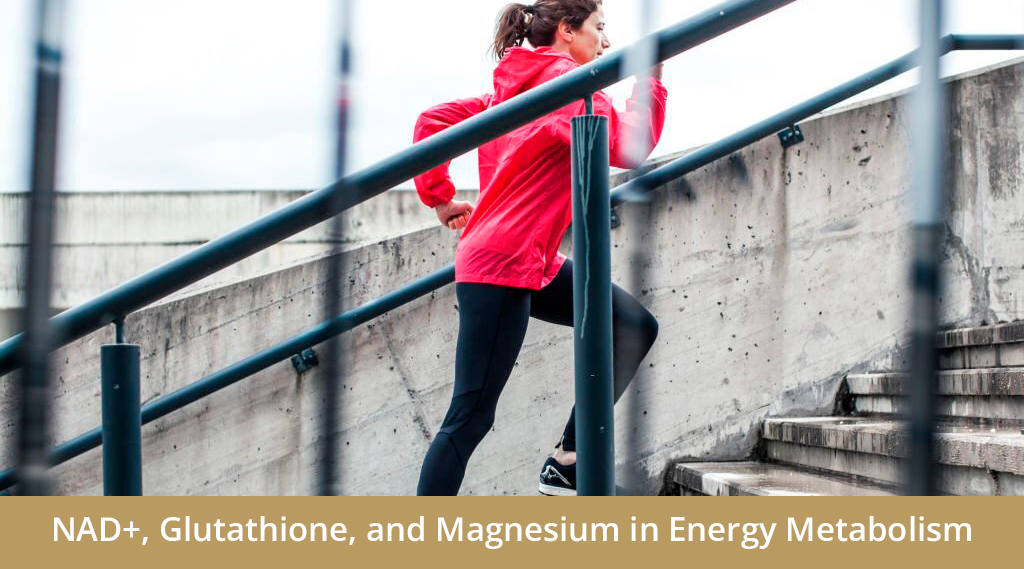
Energy production in the human body is a complex process that occurs at the cellular level. It is essential for the body's basic functions, such as movement, metabolism, and even breathing. The energy required for these processes is produced through a series of biochemical reactions that take place within the cells of the body.
The process of energy production in the body is known as cellular respiration. Cellular respiration occurs in three stages: glycolysis, the citric acid cycle (also known as the Krebs cycle), and oxidative phosphorylation.
The first stage, glycolysis, takes place in the cytoplasm of the cell, (the gelatinous liquid that fills the inside of a cell, and it is composed of water, salts, and various organic molecules, and some intracellular organelles, such the nucleus and mitochondria, are enclosed by membranes that separate them from the cytoplasm). Glycolysis involves the breakdown of glucose into two pyruvate molecules. This process yields a small amount of energy in the form of ATP (adenosine triphosphate), the primary energy currency of the cell, in which the energy is stored in the form of Phosphate bonds.
The second stage, the citric acid cycle, takes place in the mitochondria of the cell. (This process involves the breakdown of pyruvate into carbon dioxide and water. This process generates more ATP, as well as NADH and FADH2, which are electron carriers that play a crucial role in the third stage of cellular respiration.
The third stage, oxidative phosphorylation, also takes place in the mitochondria. This process involves the transfer of electrons from NADH and FADH2 to a series of electron carriers, ultimately leading to the production of ATP. This process is known as the electron transport chain.
Overall, cellular respiration produces a net yield of 36-38 ATP molecules per glucose molecule. This energy is used by the body for various processes, such as muscle contraction, the synthesis of new molecules, and the maintenance of cellular structures.
The body can also produce energy through other processes, such as the breakdown of fats and proteins. These processes are not as efficient as the breakdown of glucose, as they produce fewer ATP molecules per molecule of fuel. However, they can still provide the body with energy in times of need, such as during periods of fasting or intense exercise.
In addition to energy production, cellular respiration also produces waste products, such as carbon dioxide and water. These waste products are eliminated from the body through the lungs and kidneys, respectively.
What about NAD+?
Nicotinamide adenine dinucleotide (NAD) is a coenzyme that plays a crucial role in energy production within the human body.
NAD+ is involved in all three stages of cellular respiration: glycolysis, the citric acid cycle, and oxidative phosphorylation, leading to the production of ATP.
NAD+ also plays a role in other metabolic processes, such as the breakdown of fatty acids and the synthesis of DNA. NAD+ is involved in the oxidation of fatty acids, which leads to the production of energy. NAD+ is also required for enzymes involved in the synthesis of DNA, which is essential for cell division and growth, and the repair of DNA damage, thus protecting the body from age-related diseases.
NAD+ levels in the body can be influenced by factors such as diet and aging. For example, a diet that is high in calories and fat can lead to a decrease in NAD+ levels, while caloric restriction and exercise have been shown to increase NAD+ levels. As we age, NAD+ levels tend to decline, which may contribute to age-related diseases and a decrease in overall energy production.
What about Glutathione?
Glutathione is a tripeptide molecule composed of three amino acids: cysteine, glutamic acid, and glycine. It plays an essential role in the body's energy production process by acting as a powerful antioxidant and supporting the function of enzymes involved in energy metabolism, especially the enzymes that are concerned in the production of the energy molecule, ATP.
What about Magnesium?
Magnesium is an essential mineral that plays a crucial role in energy production. It is involved in all steps of Krebs cycle, and in the final step of ATP production inside the mitochondria, the powerhouse of the cell.
All the above highlights the crucial role, that, NAD, Glutathione, and Magnesium, play in energy production, of course, along side other important molecules.
In conclusion, energy production in the human body is a complex process that occurs at the cellular level. Through the process of cellular respiration, the body produces ATP, the primary energy currency of the cell. This energy is used by the body for various processes, such as muscle contraction, the synthesis of new molecules, and the maintenance of cellular structures. While the breakdown of glucose is the most efficient process for energy production, the body can also produce energy through the breakdown of fats and proteins.
Recent Posts
-

Infections spread from one person to another by sexual contact are known as sexually transmitted diseases (STDs) or sexually transmitted infections (STIs)... Read more
March 17, 2025 -

This intravenous treatment for your skin is the most natural anti-aging treatment. You can stop the aging process in a much simpler way.
March 17, 2025 -

Vitamin C (also known as ascorbic acid) is abundant in vegetables and fruits. A water-soluble vitamin and powerful antioxidant, it helps the body form and maintain connective tissue, including bones, blood vessels, and skin.
March 17, 2025 -
.webp)
Freckles are harmless clusters of hyperpigmented skin lesions also known as Ephelides. Freckles appear as small brown flat spots scattered mostly across the face, back shoulders and chest area.
April 22, 2024 -
.webp)
Laser hair removal procedure is the most-advanced method of hair removal. It is a cosmetic procedure that uses laser pulses targeting the hair roots, compared to traditional methods of shaving, and plucking the superficial hair. The hair follicles will be destroyed through the process of selective photo thermolysis. This process involves the use of a laser source to produce heat precisely targeting the melanin pigment of the hair. The heat will damage and hair root inhibiting the hair growth and normal hair cycle.
April 18, 2024




